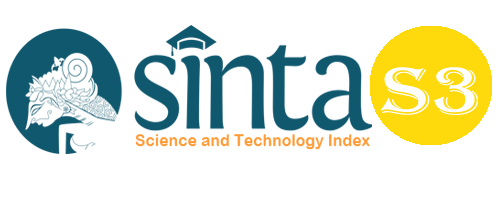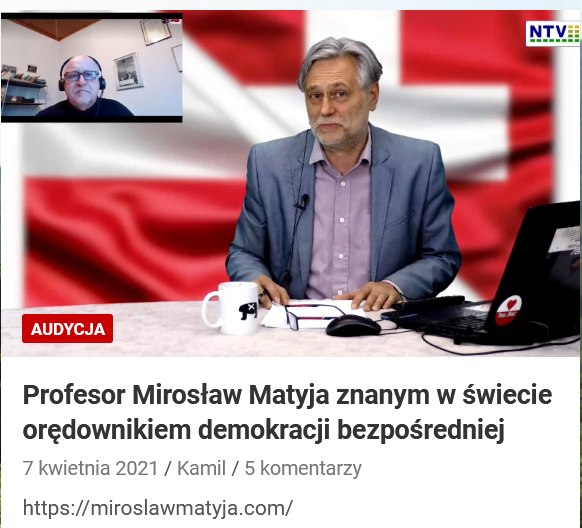Utilization of Youtube Media in Developing English Speaking Ability
Abstract
Technological developments greatly affect the world of education, so that the paradigm of conventional learning media in learning is currently starting to shift towards technology. YouTube is one of the learning media that aims to clarify messages, overcome the limitations of space, time, energy and senses and create a passion for learning. The purpose of this study was to determine the use of YouTube media in developing English speaking skills. This research method uses qualitative research with teacher and student respondents. The data sources in this study are divided into 2, namely primary data sources and secondary data sources. Primary data sources were obtained from teachers and students at SMA Negeri 6 Bekasi while secondary data were obtained through journals related to the purpose of this study. Data collection techniques used were interviews and document review. The data analysis technique used is to process research data by listening, selecting data, analyzing data, analyzing data and concluding results. The results of this study are that the use of youtube is a good medium to be applied in improving speaking skills. In addition, this media will make the classroom atmosphere more active and interesting. So that students' speaking skills can develop through youtube videos.
Keywords
Full Text:
PDFReferences
Benson, P. (2015). Commenting to learn: Evidence of language and intercultural learning in comments on YouTube videos. Language Learning & Technology, 19(3), 88-105. Brook, J. (2011). The affordances of YouTube for language learning and teaching. Hawaii Pacific University TESOL Working Paper Series, 9(1), 2.
Bjorklund, D. F. (2005). Children’s Thinking: Cognitive Development and Individual Differences. Australia: Wadsworth.
Burke, S. C., Snyder, S., & Rager, R. C. (2009). An Assessment of Faculty Usage of Youtube as a Teaching Resource. The Internet Journal of Allied Health Sciences and Practice, 7(1).
Christian, Y., Aziz, M. F., Kencana, R. T., Exendy, R. R., Am, R. T., Tjiam, S., Afnesia, U. (2020). Pembelajaran Bahasa Inggris Secara Daring Melalui Youtube. Universitas Internasional Batam Prosiding National Conference for Community Service Project (NaCosPro), 2, 478–486. Retrieved from http://journal.uib.ac.id/index.php/nacospro
Hamidah, F. N., Yanuarmawan, D., & Sukya, F. (2021). Pemanfaatan Media Pembelajaran Berbasis Youtube untuk Meningkatkan Kualitas dan Kreativitas Guru Bahasa Inggris SMK. Jurnal ABDINUS : Jurnal Pengabdian Nusantara, 4(2), 365–374. Retrieved from http://ojs.unpkediri.ac.id/index.php/PPM%0Ahttp://creativecommons.org/licenses/by/4.0/
Handayani, D. (2020). Pemanfaatan Media Youtube Pada Saat Pandemi Covid 19 untuk Media Pembelajaran Bahasa Inggris Dalam Meningkatkan Vocabulary dan Pemahaman Siswa. Jupendik: Jurnal Pendidikan, 4(2), 12–18.
Hurlock, E. B. (1978). Perkembangan Anak (Edisi Ke e). Jakarta: Erlangga.
Jones, T. & Cuthrell, K. (2011). YouTube: Educational potentials and pitfalls. Computers in the Schools, 28(1), 75-85. Doi: 10.1080/07380569.2011.553149.
Lestari, R. (2013). Penggunaan Youtube sebagai Media Pembelajaran Bahasa Inggris. Seminar Nasional Kedua Pendidikan Berkemajuan Dan Menggembirakan (The Second Progressive and Fun Education Seminar), 607–612. Retrieved from https://publikasiilmiah.ums.ac.id/bitstream/handle/11617/9566/68.pdf?sequence=1&isAllowed=y
Mukti, D. H. H. (2021). Meningkatkan Kemampuan Siswa Berbicara Bahasa Inggris Menggunakan Video Youtube Di Smkn 1 Tanjung Palas. LANGUAGE : Jurnal Inovasi Pendidikan Bahasa Dan Sastra, 1(1), 100–109. https://doi.org/10.51878/language.v1i1.456
Nuha, M. U., & Saputri, T. (2021). IMPROVING STUDENTS’ SPEAKING SKILL THROUGH YOUTUBE VIDEO: SYSTEMATIC REVIEW. Konstruktivisme : Jurnal Pendidikan Dan Pembelajaran, 13(1), 1–23.
Pradana, D. et al. (2020). Nasionalism: Character Education Orientation in Learning Development. Budapest International Research and Critics Institute-Journal (BIRCI-Journal).P. 4026-4034
Purnaningsih, P. (2017). Strategi Pemanfaatan Media Audio Visual untuk Peningkatan Hasil Belajar Bahasa Inggris. Jurnal Informatika Universitas Pamulang, 2(1), 34. https://doi.org/10.32493/informatika.v2i1.1503
Sari, L., & Lestari, Z. (2019). Meningkatkan Kemampuan Berbicara Bahasa Inggris Siswa dalam Menghadapi Era Revolusi. Seminar Nasional Pendidikan, 12(1), 443–453. Retrieved from https://jurnal.univpgri-palembang.ac.id/index.php/Prosidingpps/article/view/2566
Shah, M. et al. (2020). The Development Impact of PT. Medco E & P Malaka on Economic Aspects in East Aceh Regency. Budapest International Research and Critics Institute-Journal (BIRCI-Journal). P. 276-286.
Simbolon, N. (2014). Pengaruh Pendekatan Pembelajaran Dan Kemampuan Verbal Terhadap Kemampuan Berbicara Bahasa Inggris Siswa SMA Negeri 14 Dan 21 Medan. Jurnal Cakrawala Pendidikan, 2(2), 225–235. https://doi.org/10.21831/cp.v2i2.2149
Snelson, C. (2011). Youtube across the Disciplines: A Review of Literature. MERLOT Journalof Online Learning and Teaching, 7(1).
Susanti, Y. O. (2017). Meningkatkan Kemampuan Berbicara Ana Melalui Bermain Pera Mikro. Jurnal Potensia, PG-PAUD FKIP UNIB, 2(1), 63–70.
Susilana, R., & Riyana, C. (2009). Media pembelajaran. Bandung: Wacana Prima.
DOI: https://doi.org/10.33258/birci.v5i1.4580
Article Metrics
Abstract view : 110 timesPDF - 61 times
Refbacks
- There are currently no refbacks.

This work is licensed under a Creative Commons Attribution-ShareAlike 4.0 International License.

This work is licensed under a Creative Commons Attribution-ShareAlike 4.0 International License.

_.gif)

















_.gif)



